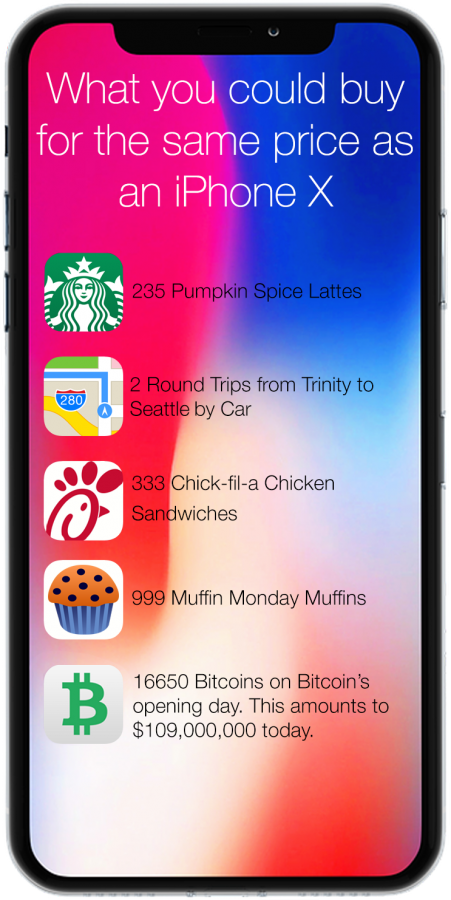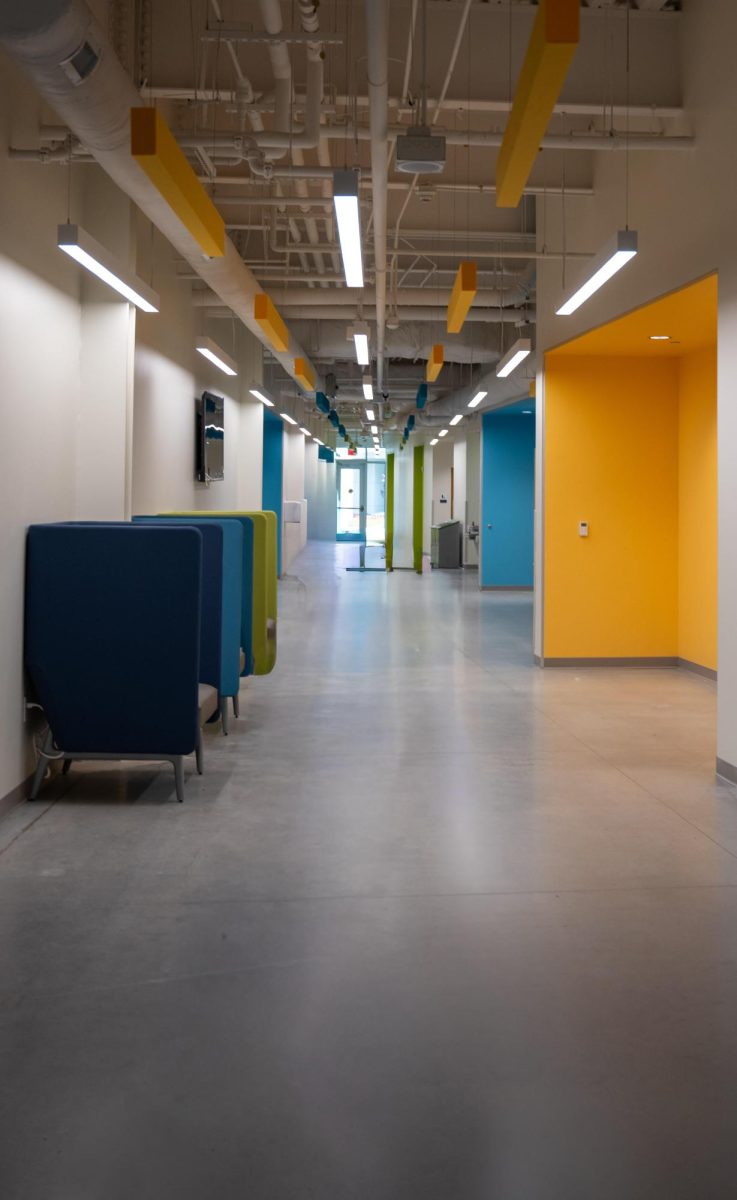If you could buy the latest iPhone by working 124 hours at a minimum-wage job, would you? This is the dilemma that some face when considering to purchase the newest Apple phone.
At the annual Apple keynote in September, the company revealed its much anticipated flagship iPhone: the iPhone X (pronounced as 10). Since then, customers have been impatiently waiting for its release on Nov. 3. However, waiting isn’t the only thing they have to do. For many, this period before the release has involved saving up a pretty penny for the new device.
Apple has set the price for the base 64GB model at $999, and for the 256GB model, $1,149. The base price, a $350 increase from last year’s iPhone 7, is this high because of all the new features packed into it. It seems that the biggest culprit is the new “Super Retina” OLED screen, which no previous Apple phones have included. This screen has a substantially higher resolution and covers almost the entire front of the device. Additionally, there is the FaceID camera, a new and faster processor, dust and water resistance, wireless charging, improved front and rear facing cameras and a dedicated GPU (Graphics Processing unit).
So far, it seems like customers are enjoying the phone. Senior Jake DiClemente recently purchased the iPhone X, and overall he is very satisfied with it.
“It’s been a pleasant experience so far,” DiClemente said.
As far as the $1000 price tag, to him it seemed fair for the product.
“An iPhone is an iPhone,” he said. “It’s the best phone on the market, nothing beats it, it always works. It’s worth the price point, it’s worth it 100%.”
He also wasn’t terribly bothered with the fact that the new phone did not have a headphone jack, a decision Apple has made that has received much controversy. He did say that it was an adjustment for him, having to carry both a pair for his iPhone and his computer, but overall he doesn’t mind. Additionally, one thing users thought would annoy them is the new notch on the top of the device, used for the improved front cameras and the facial recognition. However, this is not the case with DiClemente.
“I’ve actually grown to like it, I like having the notch,” he said. “It’s cool.”
He is happy that Apple has finally switched the OLED screen, stating that the change was a long awaited and anticipated one for customers. Samsung has been manufacturing this type of screen for almost 7 years. DiClemente also says he likes the improved brightness capabilities, color, and blacks displayed on the phone. He is pleased with the battery and FaceID as well.
DiClemente does not hesitate to recommend the phone to others.
“If you’re willing to drop the cash, it’s absolutely worth it,” DiClemente said. “If it’s something you’re not sure about it, then just wait. If you can get it, get it. It’s a great phone; you wont be dissapointed, and you won’t feel like you wasted your money and that the extra $400 isn’t worth it. Trust me, it is.”
For the market side of the iPhone X, Economics teacher. Kelly Aull explains all about the price point of the phone and how Apple is controlling a majority of the smartphone market. As far as the extreme $1000 price, she believes this was a good price to charge. She explains that this is evident due to the fact that many are buying the device anyways. Additionally, she believes Apple is charging this price for a reason other than just the new components.
“I think Apple has struggled in the last few years with coming up with a brand new idea,” Aull said. “They’ve been rethinking the iPhone and tweaking things but they haven’t come up with something radical in a while. So, charging a radical price for a phone might be their attempt to differentiate this from other generations of iPhones.”
Apple has had a long history of making innovative new devices for customers worldwide, however, this might change. As seen with the massive price increase for the newest iPhone, the company could be setting a new precedent, one that makes affordability an issue. How Apple will deal with this issue is unknown, but if the precedent continues, we could soon be living in a world where phones cost more than computers.
















